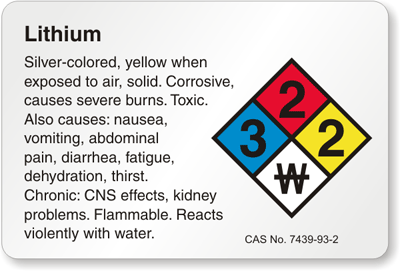H2 is portable but almost no one is going to want to drive in California traffic with a tank of compressed hydrogen on their car. So you're stuck with solid storage like in metal hydrides. Those are bulky and heavy for the amount of hydrogen they can store. That leaves a reformer of some sort either using NH3 (aggressive and dangerous chemical) or CH3OH (aggressive and dangerous chemical that burns invisibly making refueling a car a dodgy experience).
Anhydrous ammonia is so dangerous...
And, it's not like it hasn't been used for vehicles on a widespread basis before...
During WW 2, the Belgians couldn't get gasoline to run their public transit system from the occupying Germans so they switched to anhydrous ammonia.
Anhydrous ammonia is in many ways safer than gasoline to handle. It's certainly safer than a huge battery made with lithium if the tank gets damaged.
Actually it's very much the issue. Direct application of H2 in a fuel cell is one thing, making H2 onboard the car is another.
It is irrelevant. Whether you are using internal combustion or a fuel cell, the hydrogen is converted to energy and water is the byproduct. With ammonia, it's basically the same thing only you also get nitrogen as a byproduct.
And you are forgetting the concepts of the "Switchable Battery Packs" which make refueling a lot faster for EV's.
No, but that idea is insane. Not all vehicles use the same battery pack. Battery packs weigh 1000 lbs. and up. The battery packs are usually in a not readily accessible location.
That means you need a warehouse with all the various types of battery packs available for customers, even ones that are rarely used. The cost involved in having all those extra packs laying around is obscenely expensive.
Then there's the weight and location of the pack to be changed. This means you need lifts for any vehicle that comes in for a swap, tooling to remove the pack, and that process might take anything up to an hour on its own. Next, you need heavy lifting equipment like specialized forklifts to move the battery and bring the replacement which takes equal time to install and test.
The whole won't improve charging times over fast charge stations and building a swapping facility will run you into the millions in cost to build, man, and maintain it.
Therefore, to make it work even half assed, you need ALL manufacturers to agree on a single type of battery pack that is standardized. That allows for a site to have that one type of pack ready to go, and every vehicle is the same process to remove and install it. That isn't likely to happen either since some people will want longer range, or a different size vehicle the pack won't fit. Or, are you suggesting that the US government do like East Germany did and make everyone have the one, same, crappy little car?
DC Fast charging exists which can fill the EV in something like 20 minutes. Still a lot longer than filling up at the gas station, but if the swappable battery packs thing takes off it will be much faster.
The problem with fast charging is the ampacity of the system. For that to work you need a station capable of 100 to 300 amps at 240 or 480 volts to pour all that power into the vehicle quickly. That raises the cost of the station exponentially along with making the draw on the grid far greater. So, those are going to remain the exception and be expensive to use. That isn't going to change.
Either way EV's aren't for everyone nor for every use application.
When I was in Norway about 20 years ago at a conference on hydrogen fuel cell vehicles they basically said that unless the H2 storage situation could be worked out Fuel Cell cars would forever be a niche thing. And the last 20+ years it looks exactly like that is true.
EV's aren't for most people. They have never been, even in 1910 when halfway practical ICE vehicles barely existed. They're fine if they're your second car and daily commute vehicle (eg., you are rich enough to afford two cars like that) and you live in an urban area. In Arizona for example, there are people that commute one way to work in excess of 60 miles. Yea, you probably think that's insane, but people here do it because you are driving almost the entire distance at 75 to 80 mph. I've actually met people that commute in excess of 100 to 150 miles a day just so they can have a cheaper home, or live in a particular area with amenities they want.
Norway is about 80% the size of California and roughly the same shape. About half of Norway is all but uninhabited due to geography too. Their push for EV's won't work in the US. Fuel cell cars are the way to eventually go. In the meantime, hybrids are the best choice, not straight EV's. Toyota even worked out the math proving it.
So, we let the market have hybrids as an alternative to ICE vehicles while we move eventually to fuel cells and EVs are bypassed as the impractical, expensive, alternative they are.








